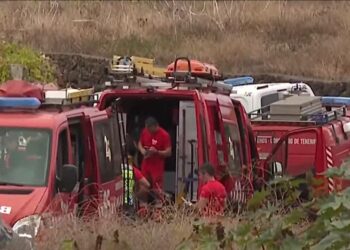“Based on the information we have, the subterranean termite (Reticulitermes Flavipes) is currently in decline on the island,” states Juan Francisco Pestano Gabino, head of the Tragsatec group and the individual responsible for the eradication strategy against this invasive exotic species that has left the residents of Tacoronte, La Laguna, Santiago del Teide, Adeje, and Arona in suspense for several years.
“Our efforts are slow, but they are thorough and complex enough to affirm that where we apply treatment, we are eliminating it—not eradicating it—because achieving that requires a secure period of at least five years,” Pestano elaborates.
He refutes claims about the presence of two new hotspots in Tacoronte and La Laguna, particularly near Guayonge College, as confirmed by Arsenio Gómez, a coach in the agriculture and environment sector of the Tacorontero Consistory, and clarifies that there are no issues in the Tagoro road area, in Valle de Guerra, La Laguna.
Pestano confirms that the initial detection occurred in December 2023, which was promptly addressed. Caution was exercised in areas where no reticulitermes were found, and there has been no activity from living termites for several months.
600 Potential Hectares
“In the case of Valle de Guerra, there are termites present, but we have not yet completed treatment across the entire affected area, as there are 600 potential hectares on the island that we manage between 60 and 70 annually,” he explains. Nonetheless, he clarifies that this does not equate to the discovery of new outbreak sites: “We have only identified new points within known outbreak locations, which is to be expected because this underground plague undergoes biological development that can lead to increased populations, and thus it becomes more apparent.”
He elaborates that a focus “is a region where termite presence can be physically identified from others; it might extend over a distance greater than a kilometre, potentially in a different municipality or on another island.” In this context, he wants to emphasize that, from the standpoint of project management, “no new hotspots have been reported in nearly a year and a half.”
Since 2019, Tragsatec has been tasked with administering the eradication treatment for this American termite, employing authorised biocides, chiefly hexaflumurón, which is positioned in bait stations at locations previously identified with wooden devices. Although this product has proven to be the most effective, the use of difflubenzurón still plays a minor role, notes Juan Francisco Pestano.
Financing
In this regard, it is noted that the government of the Canary Islands funds the treatments alongside the Cabildo de Tenerife. The allocation for the 2025 budget of this administration “is included, spent, and will be certified by the end of this month.” He also states that the resources provided by the Insular Corporation have facilitated the procurement of 10,000 baits, consisting of 9,000 hexaflumurón and 1,000 difflubenzurón, representing an investment totalling €1.2 million.
















